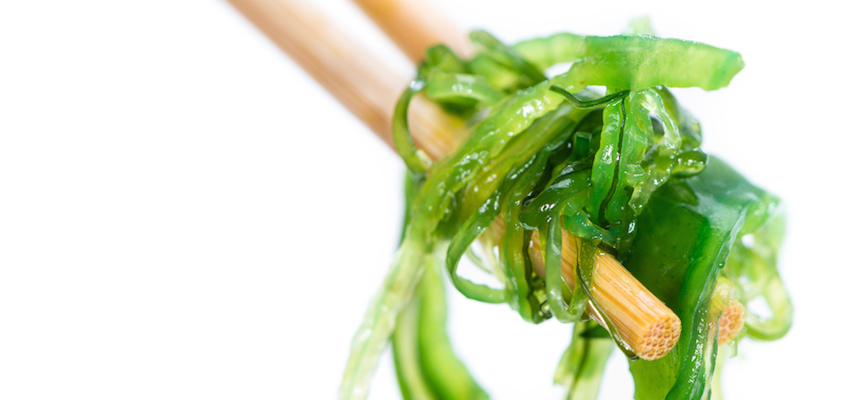Why You Should Be Eating More Kelp

Want to hear a little good news about our planet for a change?
What if I told you that the fastest growing weed on earth — one that can grow up to 20 inches a day and doesn’t require land or fresh water — was the new superfood you need? And as it grows, it cleans the water it’s in.
It’s true! I’m talking about kelp.
Okay, it’s not really new — the Japanese have been eating it for centuries. But sometimes it takes us in the West a while to catch on. Both scientists and the general public have finally figured out that we need this amazing seaweed.
Why?
Let’s start with iodine. Most of us watch our salt consumption. And that’s a good thing for our blood pressure and various other reasons. But now nearly two thirds of us may be deficient in iodine. And that’s a bad thing because it can contribute to obesity, heart disease, psychiatric disorders, and some types of cancer. Fortunately, kelp can help.
Since it grows in the ocean, it’s loaded with iodine. So kelp can keep your thyroid (and, therefore, your metabolism) at peak function. In fact, a lot of people take kelp just for weight loss . But it does so much more!
Kelp provides 46 minerals, 16 amino acids, and 11 micronutrients, including:
- Vitamins A, B1, B2, C, D and E
- Copper, iodine, iron, magnesium, potassium, and zinc
- Folic acid
Calcium
It’s also brimming with antioxidants. And it’s an anti-inflammatory. Oh, and it’s a great source of protein as well.
Now, some people will caution you about eating kelp, citing concerns about consuming toxic metals, such as mercury. But the kelp that gets sold fresh in stores in the U.S. comes from certified waters that are tested every week. (This is an area where we actually have pretty good regulations.)
Also, it seems that kelp isn’t only good at improving polluted waters, where it’s sometimes planted just for this purpose. It’s also good at rehabilitating itself. For example, a year after the Fukushima nuclear accident, contamination was found in the waters off California, and this included contaminated kelp. But just a month later, the kelp tested as clean. Pretty amazing, right?
But again, don’t worry — the kelp in that story isn’t the kelp you’ll be buying!
It’s best, if possible, to eat your kelp in its fresh, plant form, rather than as a supplement. It’s most effective that way. Also, you’ll avoid getting needlessly high doses, which is a mistake that many people who take kelp as a supplement make.
The best places to get fresh kelp are at health food stores or bigger markets like Whole Foods as well as some Asian markets. You can use it in salads, soups, smoothies and sauces (especially in Asian dishes). You can also get kelp noodles , which are a tasty and fun way to eat kelp.
There’s no established amount of fresh kelp you should eat every day, but the Japanese diet traditionally includes about three tablespoons daily. So that’s a good guideline to follow.
Photo Credit: Stocksy
Comments
Post a Comment